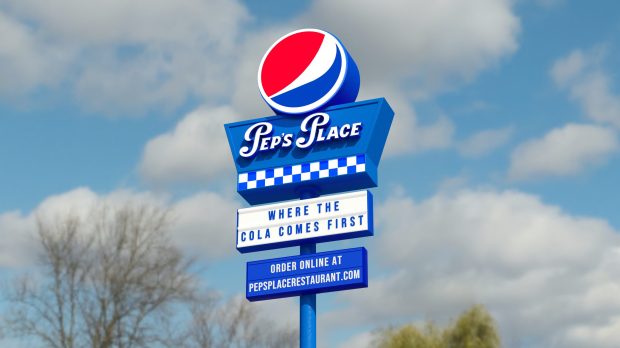PepsiCo Adds Ghost Kitchen Side Hustle to Drive Foodservice Sales

At a time when many consumers are adding second jobs to augment their income, it seems PepsiCo is looking to supplement its core beverages and snack foods business via a new side hustle in restaurant technology that’s aimed at growing its presence in foodservice.
The soft drink giant announced Wednesday (Nov. 16) that it is offering restaurant customers a turnkey ghost kitchen solution to enable them to drive revenue with additional off-premise sales.
“Ghost kitchens offer foodservice operators an efficient, proven, and cost-effective way to improve kitchen profitability and overall supply-chain utilization without the burden of additional overhead and front of house operations typically associated with launching a new restaurant,” André Moraes, senior director of marketing at PepsiCo Foodservice, said in a statement.
The move retroactively sheds light on the company’s debut of a Pepsi-branded ghost kitchen, Pep’s Place, back in May 2021. In Wednesday’s press release, the company noted that this offering is meant to leverage “learnings from the success” of that virtual brand to help restaurant customers create digital menus going forward.
The initiative comes via the beverage giant’s PepsiCo Foodservice Digital Lab, a tech consultancy and solution provider for restaurants. With this launch, the Lab aims to offer restaurants “a one-stop-shop to enter the [ghost kitchen] space,” according to Moraes.
Through ghost kitchens, restaurants can drive additional revenue without the capex it would require to open a physical restaurant. With PepsiCo centering itself in the restaurant’s virtual efforts, the company is able to make its offerings indispensable to their digital success.
In an interview with PYMNTS for the daily EMEA Newsletter, Nezar Kadhem, founder and CEO at UAE-based restaurant platform Eat App, noted that ghost kitchens “are going to deliver on healthy unit economics, food delivery at the most reasonable cost at the highest quality.”
In addition to offering a high-margin order channel, ghost kitchens can also enable operators to attract customers they may otherwise not have had access to. For instance, Marc Butler, senior vice president of strategic planning/off-premise at Hooters, explained in an interview with PYMNTS that the chain’s delivery-only brands, which have been around since before the pandemic, have consistently drawn new customers into the restaurant’s ecosystem.
“The data that we got says about 75% of the people that are ordering from the virtuals have never ordered from the core Hooters brand, and that number shocked me from the very beginning,” Butler said. “I was really expecting a little bit more overlap. But it seems that still, even to this day, three, four years later, we’re still attracting a new customer with it.”
Most restaurant orders are still placed in person, but digital ordering is rising. Research from the September edition of PYMNTS’ Digital Divide study, “The 2022 Restaurant Digital Divide: Food Aggregators Find Their Footing in Q2,” found that 10% of orders are placed online through the restaurant’s app or website. The report, which drew from a survey of 2,200 U.S. consumers, also noted that another 3% of orders are placed on aggregators.
Get the study: The 2022 Restaurant Digital Divide: Food Aggregators Find Their Footing in Q2
